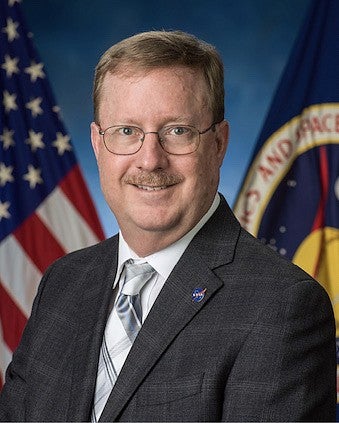Dave Draper has his sights on the moon and Mars. As NASA’s No. 2 scientist, Draper, PhD ’91 (geological sciences), is part of the NASA administrator’s senior staff, helping plan for a sustainable future presence on the moon and Mars as part of the Artemis program.

He arrived at the University of Oregon in 1985 to study volcanic rocks, drawn by the nearby presence of volcanoes. His fieldwork on lava rock chemistry and high-pressure, high-temperature experiments to probe how magma is produced in the Earth’s mantle, he says, instilled a multidisciplinary approach that has guided his interest in other planets. “Fortunately, the same physical chemistry happens on other worlds as happens on Earth,” Draper says. “It’s just the compositions that are somewhat different.”
Draper led the Astromaterials Research Office at NASA’s Johnson Space Center in Houston before his promotion in 2019 to deputy chief scientist at NASA headquarters in Washington, DC.
“Being a geologist and used to thinking in terms of millions or billions of years helps a lot when working on a long-term program like Artemis,” he says. “All of us at NASA know that it takes a huge team a long time to make space flight happen, and that each person’s role is a big contribution. I’ve met many Apollo-era folks who remain very proud of even the smallest parts that they played, and those of us in their shoes today feel the same way. Helping make possible the next giant leap is a privilege.”
—Jim Barlow, University Communications


